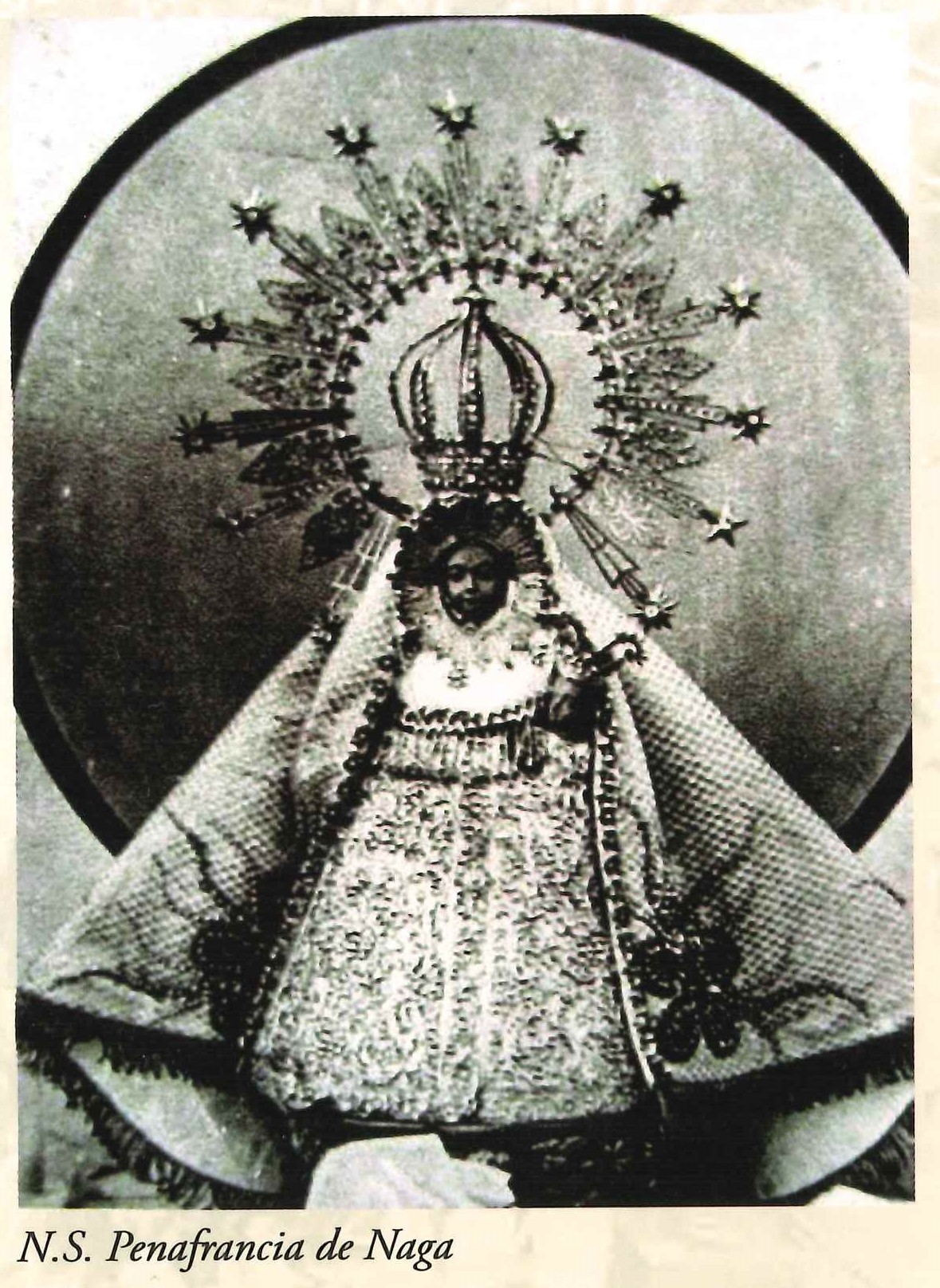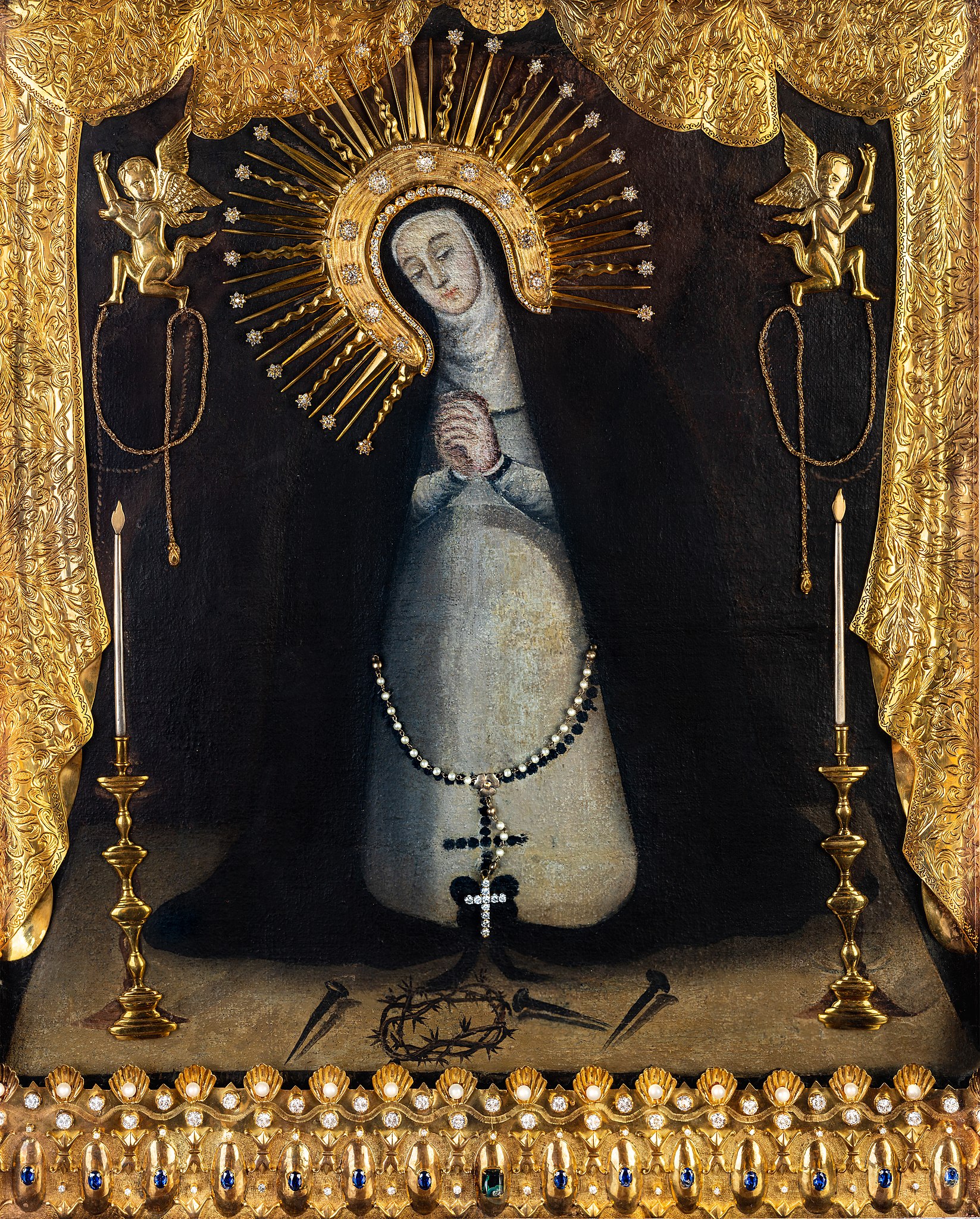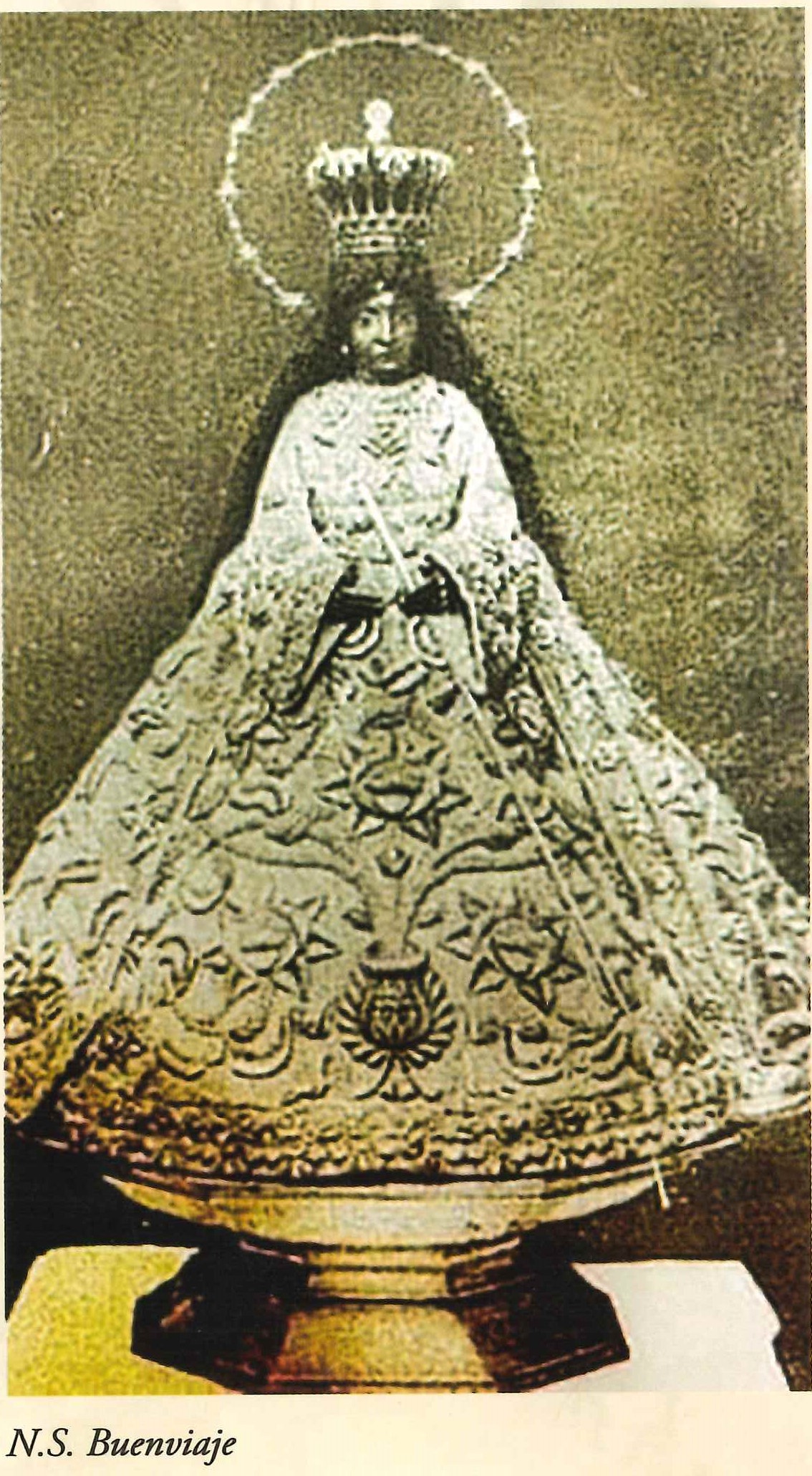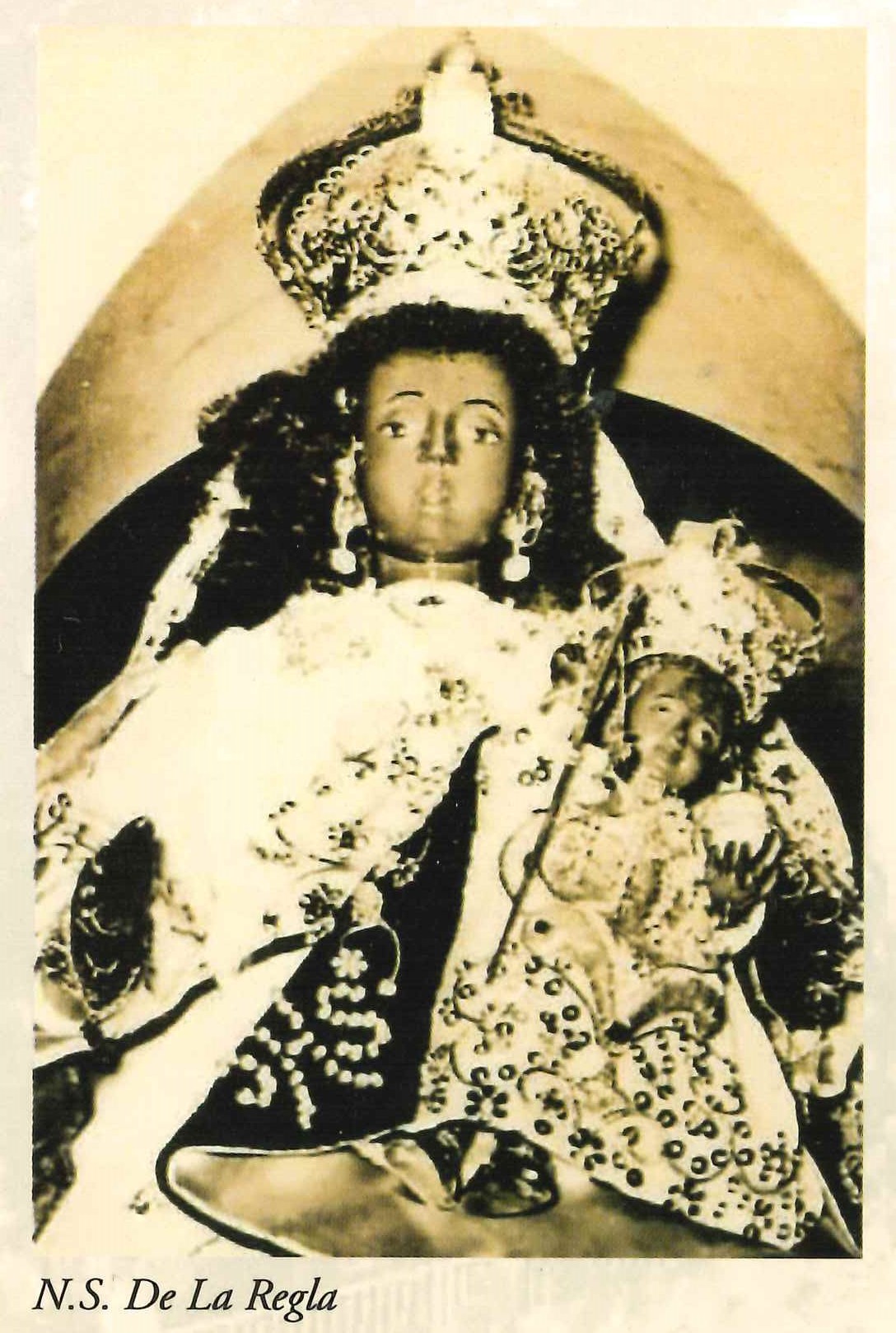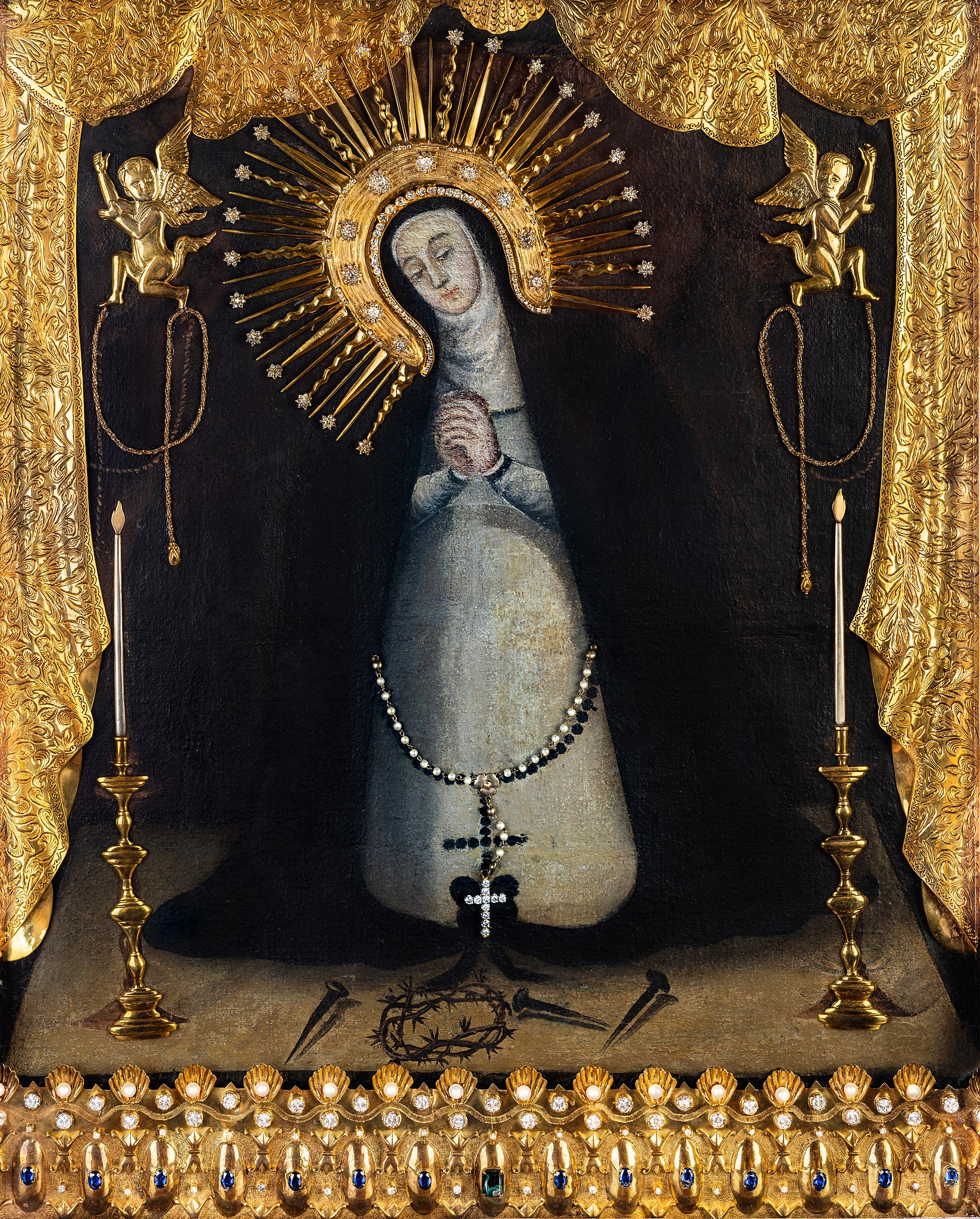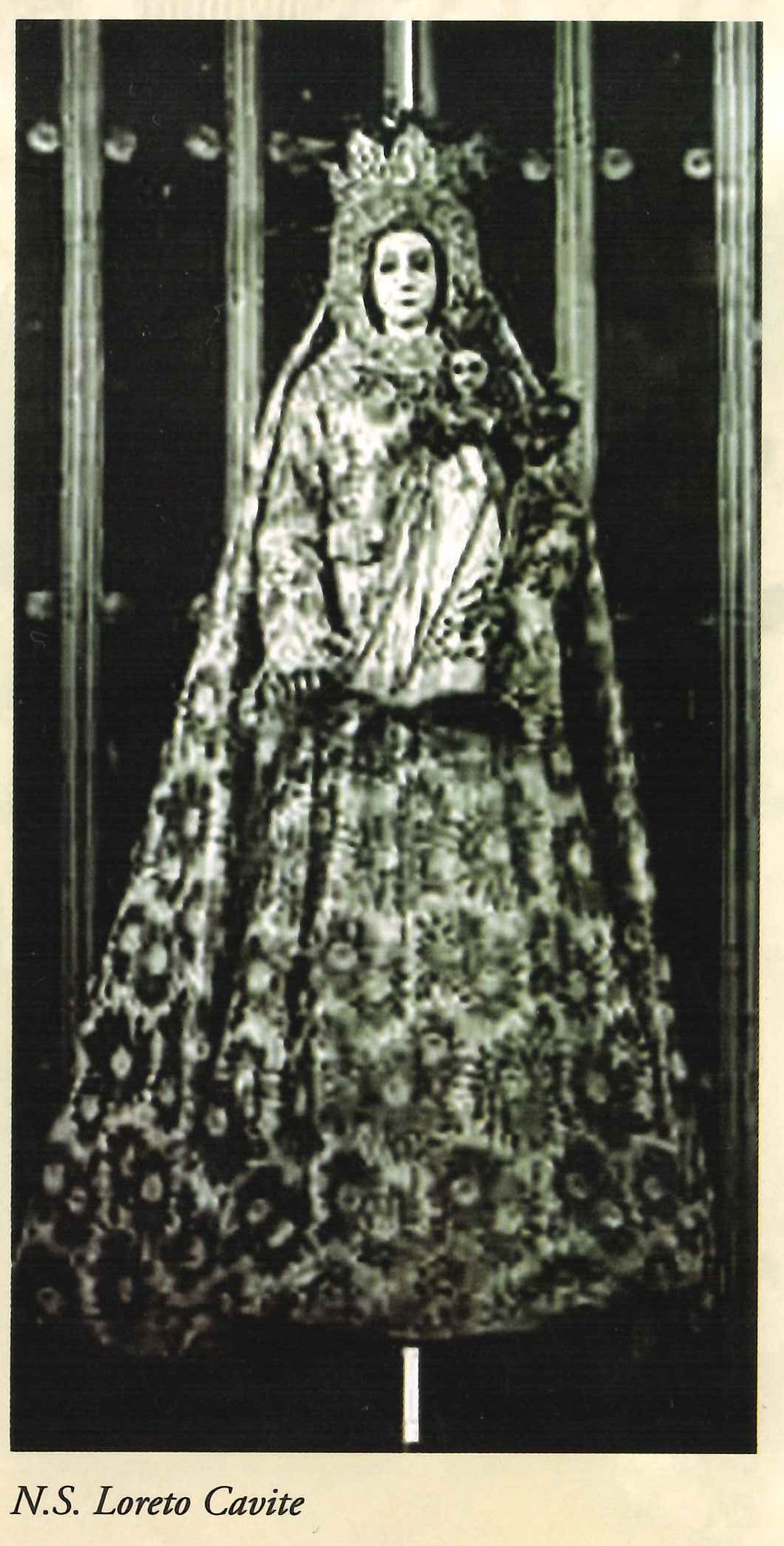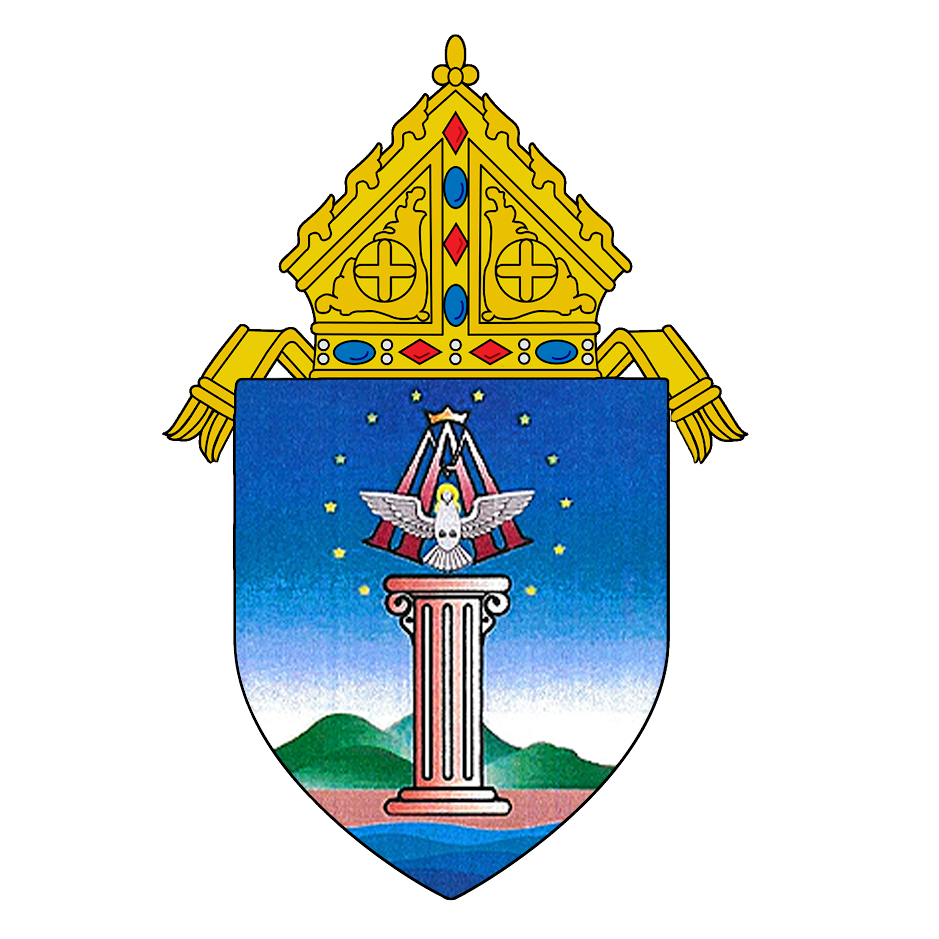Cavite Tierra de Maria Santisima
Though this accolade was given to the Puerto during the 17th Century, this may as well go for
the entire province of Cavite as the seeds of the Catholic faith thrived and blossomed in its
many other towns. Such was the rapid spread of devotion to Mary that many parishes were
dedicated to Our Lady as well as Marian organizations established in Cavite through the
centuries.
When Cavite Puerto became an independent parish, though the church called was San Pedro, the
titular patroness of the parish was the Immaculate Conception. Later in 1870, the Immaculate
Conception was declared as patroness of the Real Arsenal de Cavite and the Fabrica de Tabacos de
Cavite.
When the parish of Naic, Cavite was established, it was placed under the patronage of the La
Purisima Concepcion. In 1595, Silang as a parish, was placed under the patroness of Ntra. Senora
de Candelaria
The Augustinians built their church in the Puerto under the patronage of Our Lady of Remedies,
while the Jesuits dedicated their church to the Lady of Loreto. In the Dominican church of San
Telmo, the devotion to the Holy Rosary was promoted. In most Cavite parishes, the Cofradia de
Ntra. Señora del Rosario existed. The Recollect Fathers in Cavite Puerto promoted to the Ntra.
Señora de la Regla (Our Lady of the Rule).
On March 26, 1621, Don Juan Niño de Tabora, Governor of the Philippines, arrived in Cavite
Puerto with the brown image of the Immaculate Conception carved in Mexico. Later, this image
would be better known as Ntra. Senora de Antipolo. In 1639, the Chinese rose in revolt and
burned the church of Antipolo. For 14 years, the Virgen de Antipolo stayed in Cavite, until she
was brought in the galleon trip to Mexico. Cavite was saved from Dutch invasion because of the
presence of the Lady of Antipolo. The image was deposited by the governor general at the Royal
Chapel inside the Royal Fort of San Felipe Neri. The chapel was constructed in 1636.
Even the halls of the Hospital de San Juan de Dios were renamed after our Lady, e.g., Sala de la
Virgen de Dolores and Sala de la Virgen del Rosario. Barrios like Soledad and Rosario in San
Roque, Cavite, were named after the Virgin.
The first miracle of Ntra. Senora de Peñafrancia occurred in Cavite Puerto to a Spanish family
by the surname of Cobarrubias. Fr. Miguel Robles de Cobarrubias, the recipient of our Lady’s
favor, brought the devotion to Naga. There, he asked a local artisan to carve an image of the
Virgin and with the help of Bishop Gonzales of Nueva Caceres, the Santuario de Peñafrancia was
finished. The Peñafrancia became the patroness of the entire Bicol Region.
In 1627, the parish of Maragondon was placed under the patronage of Ntra. Senora de la Asuncion.
The peak of Marian devotion in Cavite reached its zenith when in 1667, the Blessed Virgin Mary
herself appeared before a sentry at Porta Vaga, the gateway to the walled citadel of Cavite
Puerto. According to popular tradition, the following morning after the apparition, a painting
of the Virgen de la Soledad was found floating along the shore of Canacao Bay right where she
appeared. She would thereafter be venerated as the Reina de Cavite, the Celestial Guardian and
Protectress of Cavite Province.
In 1627, the parish of Maragondon was placed under the patronage of Ntra. Senora de la Asuncion.
The peak of Marian devotion in Cavite reached its zenith when in 1667, the Blessed Virgin Mary
herself appeared before a sentry at Porta Vaga, the gateway to the walled citadel of Cavite
Puerto. According to popular tradition, the following morning after the apparition, a painting
of the Virgen de la Soledad was found floating along the shore of Canacao Bay right where she
appeared. She would thereafter be venerated as the Reina de Cavite, the Celestial Guardian and
Protectress of Cavite Province.
The devotion to the Virgen de la Soledad is well approved by the church hierarchy. The Spanish
Archbishop of Manila, Don Basilio Sancho de Santa Justa y Rufina, granted 80 days of plenary
indulgence for those who would say the novena in her honor. Bishop Mateo Rubio de Arevalo of
Cebu granted 40 more days of indulgence for those who would pray before the icon of the Virgin.
On October 21, 1909, the first American Archbishop of Manila, Jeremias Hearty, granted 100 days
of indulgence to those who made acts of devotion to the Virgin. In 1975, the Virgen de la
Soledad was proclaimed a patroness of the chapel of Tahanan ng Mabuting Pastol, the diocesan
seminary of Cavite. The image of the Virgin was solemnly and canonically crowned by the
Apostolic Nuncio, Archbishop Bruno Torpigliani, D.D., on November 17, 1978. The said coronation
was held with the approval of Rome.
